If you’ve ever been curious as to who’s behind the sexy female robots you see on album covers and in the latest The Weeknd mixtape, you’ve come to the right place.
The artist behind them is none other than the legend Hajime Sorayama, a pop culture icon known for his hyper realistic humanoid robots or gynoids, who often portray the female figure in robotic erotica glory, ranging from vintage pin-ups all up to explicit renditions of eloping mecha.
Who is Hajime Sorayama?
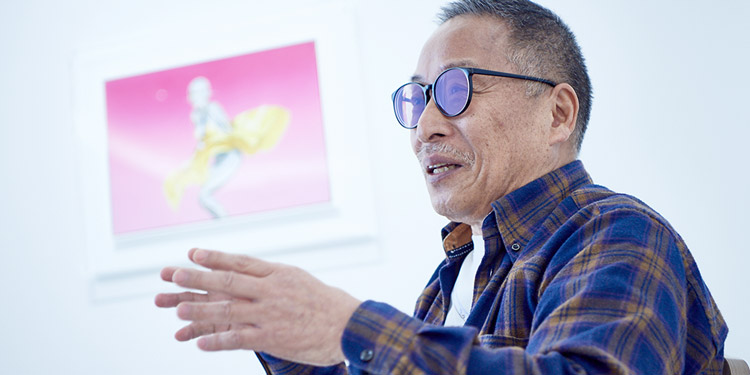
After graduating from Tokyo’s prestigious Chuo Art School in 1968, Sorayama spent a year at an advertising company before leaving to become a freelancer in the film industry. His first endeavors quickly foresaw his future and highlighted his skill in visualizing robot figures, with the suggestive mech making appearances in Timecop (1994), biomechanical warrior armor operating in Space Truckers (1996), and most famously, Sorayama’s prototype iterations of robot dogs for SONY’s AIBO project (2000).

His first endeavors quickly foresaw his future and highlighted his skill in visualizing robot figures (or what he calls gynoids), with the suggestive mech making appearances in Timecop (1994), biomechanical warrior armor operating in Space Truckers (1996), and most famously, Sorayama’s prototype iterations of robot dogs for SONY’s AIBO project (2000), a landmark tech project that ran until 2013.
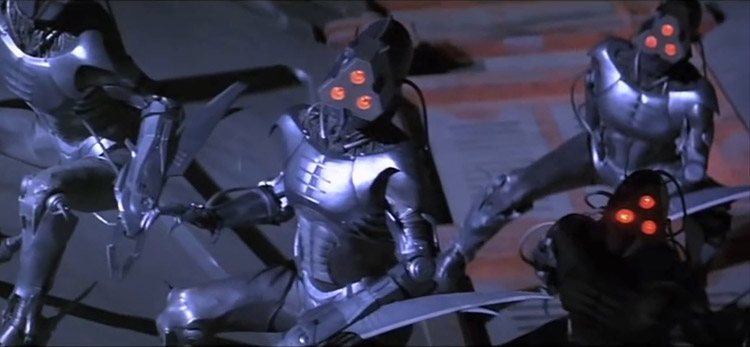
While he was quickly becoming every artist’s first lead for robot design in film, Hajime Sorayama also had personal solo endeavors to promote his work under his own name (as opposed to, say, “Majime Sorayama”).

Before becoming a known name in the production industry, Sorayama placed his name on the map after he published “Sexy Robots” in 1983, an art book featuring female robots and chrome-plated gynoids in suggestive poses. In an interview with Playboy TV, Sorayama revealed his inspirations: the Penthouse and Playboy magazines.
By combining the pin-up culture of Playboy that he’d been familiar with ever since high school with his fascination for organic robot forms, Sorayama was able to create a unique style that would become a pop culture hit now more than ever.
Sorayama’s Latest Works: The Chrome Lives On
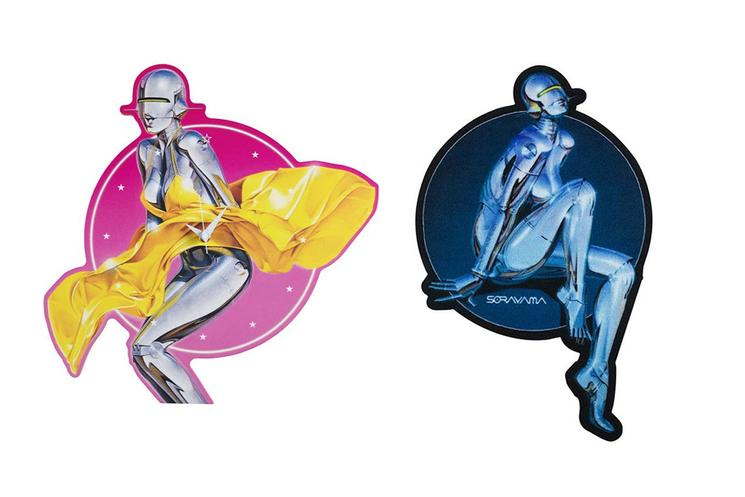
For all the hypebeast Generation Z and millennials reading, Sorayama is a frequent partner of 88rising, the distinctly Asian-American record label housing the likes of Joji, NIKI, Rich Brian, and Higher Brothers. The artist created the most distinct visuals of the label’s Head in the Clouds II project. One might be able to recognize Sorayama from the chrome-plated surfer on the album’s cover all over Spotify. Most on-brand for Sorayama is the teasing femme fatale from NIKI’s provocative pop R&B single entitled ‘Indigo,’ which was also featured on the 3M capsule for the album that went on a limited release last 2019.
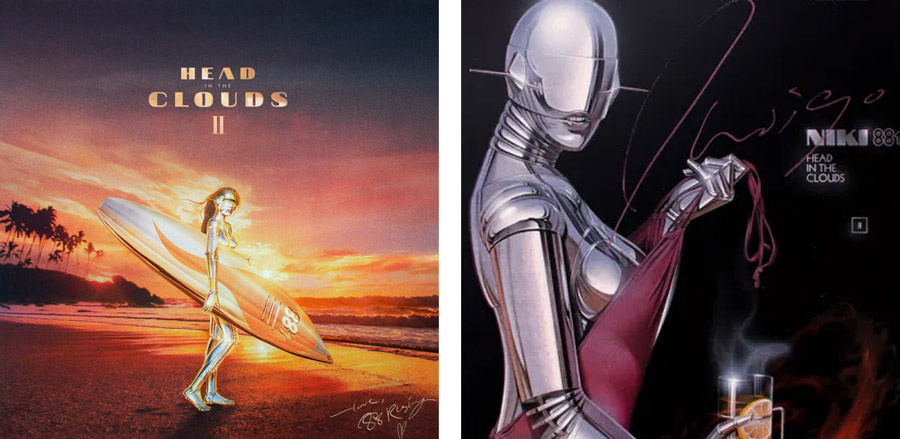
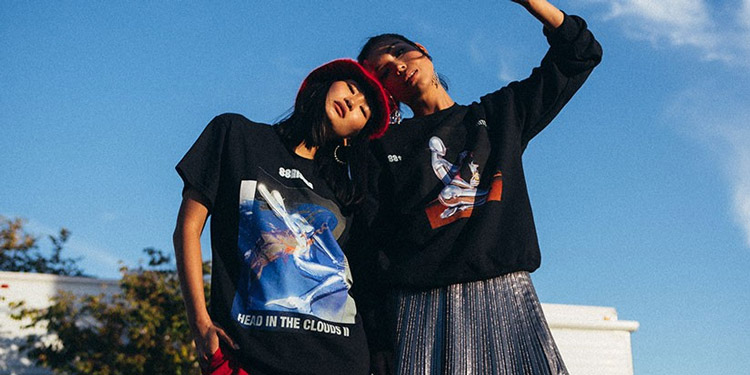
Aside from 88rising, Hajime Sorayama was also able to create the visualizer for The Weeknd’s “Echoes of Silence’ music video. The short dramatic narrative featured post-apocalyptic museums full of Sorayama’s gynoids, perfectly encapsulating the mixtape’s melancholic ensemble.
Hajime Sorayama also curates chrome-plated figures in other shapes and sizes other than the female figure. The legend has worked to create die-cast Iron Man, silver and gold BE@RBRICKS, and an iconic chrome-plated Mickey Mouse exhibit, which is proudly displayed on the artist’s Instagram page.
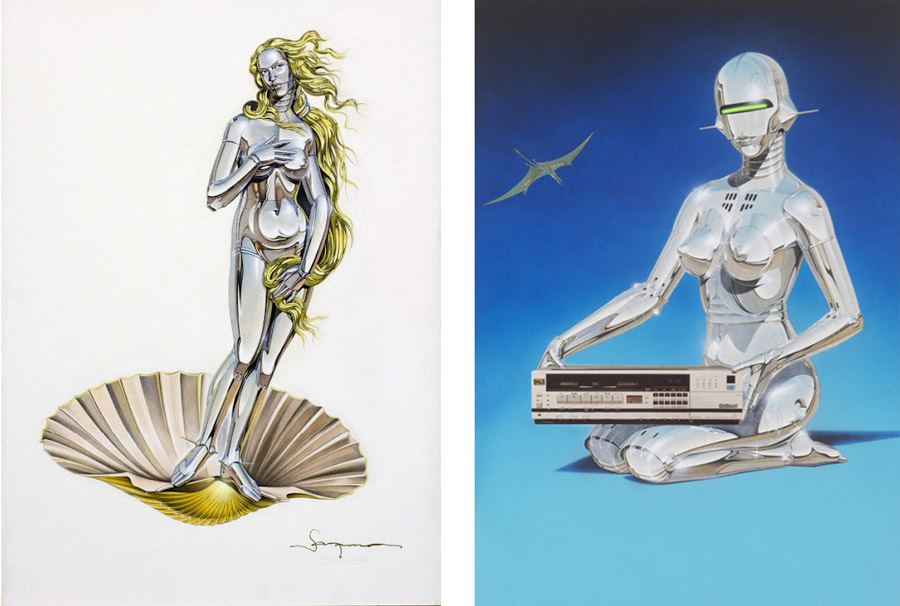
SORAYAMA SHARK & A New Perspective On NFTs

From acting as a lead designer in sci-fi movies to illustrating gynoids for the likes of Mickey Mouse, Hajime Sorayama has done it all. Today, Hajime Sorayama can be found venturing into the world of NFTs. His acclaim in the NFT world is well-earned with Sorayama’s “SORAYAMA SHARK” exhibit for cultural icon NANZUKA and blockchain authenticator ZHEN. “SORAYAMA SHARK” features silver 3.5 meter sharks circling an aquarium-like display.
The NFT versions of the sharks are entitled Untitled_Shark Robot (Day) and Untitled_Shark Robot (Full) and feature animations of the animals swimming underwater, ending with “special unlockable surprises.” The collections sold at $299 and $3,700 each, the latter coming with physical cards to document the consumer’s purchase.
While NFTs have recently been fostering debate due to their ethics and notorious pump-and-dump culture (see the cases of Neopets and Bored Ape Yacht Club), Hajime Sorayama offers a refreshing perspective on NFTs that every artist and cryptocurrency enthusiast can sit on.
As opposed to the current NFT culture that sees tokens as an opportunity to begin building empires in the form of metaverses or to simply gain income through collector culture, Sorayama, a pop culture icon recognized for decades on end by now, sees NFTs as a way to preserve art beyond the mortality of the artist. “I aim for my work to be an inscription of a perpetual futuristic history,” Sorayama said prior to the launch of his digital aquatic tokens. “So, when the work that I created is annihilated from this world, as long as the digital form survives, that’s fine.”





































